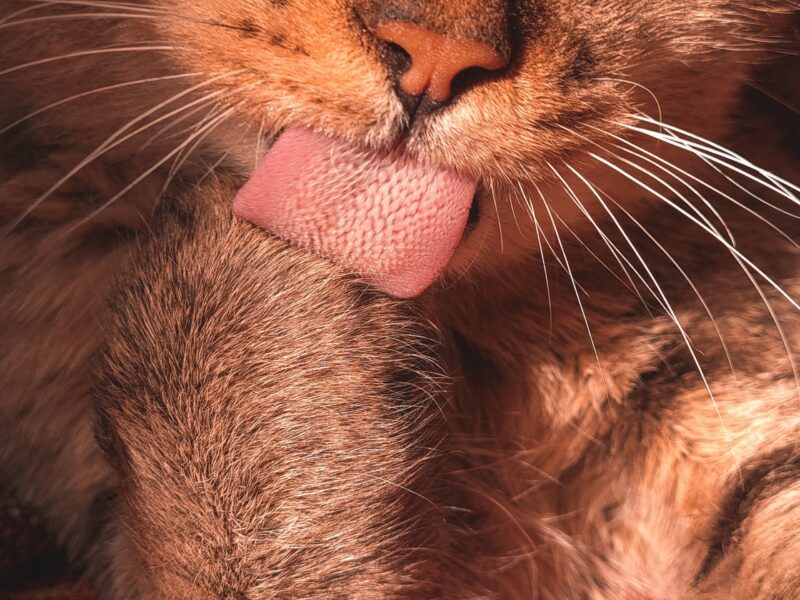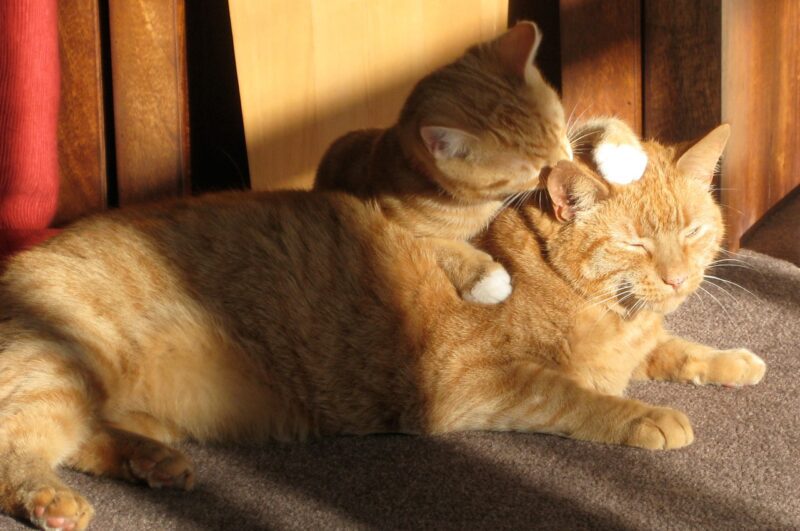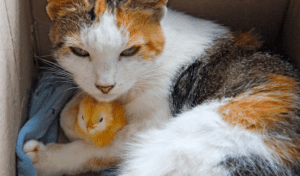If youíve been taking care of cats then seeing hairballs everywhere isnít new to you. However, if youíre new to the feline community, welcome! If you see a weird tubular-shape that may kind of look like a poop but...
If youíve been taking care of cats then seeing hairballs everywhere isnít new to you. However, if youíre new to the feline community, welcome! If you see a weird tubular-shape that may kind of look like a poop but not in their litter box, then that might be a hairball. Donít be shocked because the occasional hairball is a normal part of your kittyís grooming routine.
Cats are known to be very good at cleaning themselves. In fact, they rarely need bathing because of this. However, in the self-grooming process, they swallow loose hair which eventually turns into a hairball.†
What Are Hairballs
Hairballs are clumps of hair that accumulate in your feline friendís stomach. Contrary to what we see in the movies or the cartoons, hair balls arenít usually ďballsĒ or round shape, and they are definitely not a cute pile of hair. Itís the exact opposite. Hairballs are usually cylinders, which are the shape of your catís esophagus, slimy, and unpleasant to look at.†
How Do Hairballs Happen
According to Purina, a catís tongue has little barbs to snag the hairs as they shed. These barbs are faced backwards on the tongue to help snag loose hairs, but it also means that cats have little choice but to swallow the hair when they groom.
Since cats are meticulous groomers, when they groom themselves, the tiny hook-like structures on their tongue catches their loose and dead hair, which is then swallowed. Now, these hairs pass all the way though your fur babyís stomach, and eventually form a hairball!†
What Are the Causes Hairballs

Cats that shed a lot like long-haired breeds such as Persian or Maine Coons are more prone to hairballs due to their long fur that they have to groom.†
Seasonal ChangesKittyís shed their fur seasonally, and during these periods of increased shedding, the risk of hairball formation increases.†
Age and HealthEven when theyíre older, your feline friend will not miss a day of self-grooming. However, senior cats may have fussier hair and may produce hairballs more often.†
What Are the Symptoms of Hairballs in Cats
You might have already heard or watched your cat try to eliminate a hairball out of their throat. And if youíve been living with your feline friend for quite some time, you might even be used to seeing them to the trick. Some common hairball symptoms that arenít usually something to be worried about include hacking, gagging, and retching. However, if you notice the following symptoms, make sure to have your fur baby checked by your veterinarian:
Ongoing vomiting, gagging, retching, or hacking without producing any hairball Lack of appetite Lethargy Constipation DiarrheaWatch out for these symptoms as they could be an indication of a potentially life-threatening blockage due to hairball
How to Prevent Hairballs
†
Brush your cat regularly, especially if they have long or dense fur. This helps remove loose fur before your pet cat ingests it. Remember, the more fur you remove from your cat, the less fur will end up in their stomach,
Hairball Control Cat FoodConsider feeding your cat a specialized hairball control cat food. These diets typically contain added fiber, oil, minerals, and vitamins to help move hair through the digestive system naturally.†
SupplementsBefore giving any supplements, make sure to consult with your veterinarian. Try and ask about which hairball prevention supplements is safe and appropriate for your kitty. These may include petroleum-based or malt-flavored products that help lubricate the digestive tract, aiding in the passage of hair.†
HydrationEnsure your kitty stays well-hydrated. Water helps flush the digestive system and potentially prevents hair from forming troublesome clumps. Also, if your pet cat eat dry food only then their diet isnít providing them with enough hydration in their digestive system.†
Playtime and ExerciseExcessive grooming can be due to stress. Engage your cat in interactive play. This not only provides mental and physical stimulation but also helps reduce stress, which can contribute to excessive grooming.†
With each purchase, Doobert donates 5% to the charity of your choice.
How to Manage Hairballs
Hairball RemediesYou can try commercial or over-the-counter hairball remedies which are available in paste or gel form that you can easily give to your fur baby. These products often contain ingredients that aid in hairball passage.†
Fiber-Rich TreatsTry to offer your feline buddy some fiber-rich treats as part of your catís diet. These treats can provide an additional source of dietary fiber, promoting healthy digestion.†
Regular Vet Check-upsItís always best to have your regular veterinary check-ups to monitor your pet catís overall health. Your vet can provide advice on managing hairballs based on your catís specific needs.†
Homeopathic RemediesSome cat owners explore homeopathic remedies such as pumpkin puree. This is said to be a natural way to add fiber to the diet and promote regular bowel movements.†
Laxative PastesLaxative pastes, recommended by your veterinarian, of course, can help lubricate the digestive tract and facilitate the passage of hair.
Hairballs are generally a common and harmless aspect of cat ownership. Although itís unrealistic to completely eliminate hairballs, proactive measures can significantly reduce their frequency and impact on your catís well-being. From regular grooming sessions and specialized diets to veterinarian-recommended remedies, there are various ways to manage hairballs and ensure that your feline friend enjoys a happy and healthy life, free from the inconvenience of excessive hairball formation.†
The post Fuzzy Situation: All About Cat Hairballs appeared first on Doobert LIVE.













